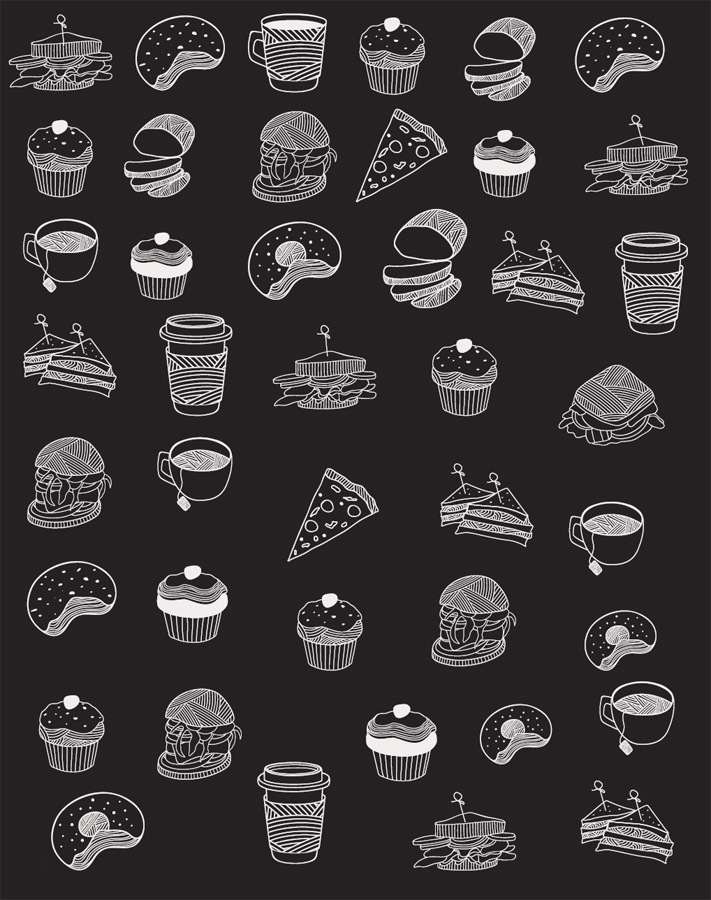Intro

GOOD without GLUTEN is not a book about a passing trend, its about a different way of cooking for people with coeliac disease or gluten intolerance, or anyone who wants to change their diet. Its a different approach to cooking and food because we work around dietary restrictions while at the same time exploring new culinary pleasures. NOGLU , my restaurant in Paris, is the realisation of a dream of mine after ten years of culinary discoveries and disappointments. Years of research have gone into creating these recipes as Ive tried to work out how to best combine a gluten intolerance with a growing interest in cooking and good food. Years of travelling, meeting people and experimenting with recipes inspired me to open a restaurant where people affected by similar dietary restrictions can enjoy simple, tasty, beautiful dishes that are good without gluten! Thanks to my fellow chefs Jenni, Mitsuru and Mike for their imagination and their total commitment to making NOGLU a place of culinary conviviality for everyone. FRDRIQUE


The gluten-free pantry
There are many gluten-free grains and flours and they offer a multitude of combinations for delicious baking and cooking.
Their flavours and textures are often new and surprising, and the research we carried out when developing the dishes for our restaurant means we can offer you recipes that are attractive on both a nutritional level and in terms of flavour. All the products we use are certified gluten-free. On the next few pages youll find lists of the different ingredients you can gather together at home for easy and tasty gluten-free cooking every day. We also incorporate dairy substitutes in our recipes, because lactose intolerance often goes hand in hand with gluten intolerance, and these dairy substitutes offer their own nutritional value and flavour variations as well. You can find all these ingredients in organic food stores or on specialist websites.
Flours
CHESTNUT FLOUR We use chestnut flour in small quantities in combination with rice flour or tapioca and potato starch.
It has a very strong flavour that gives lots of character to breads and baked items. It is also a food thats high in energy and low in fat. MILLET FLOUR Millet is an energy-rich, nutritious grain thats high in protein. Its flour has a neutral flavour and it gives body and softness to gluten-free baking. BROWN RICE FLOUR Rice flour is light and has a neutral flavour, so it is perfect to use as a base in baking in combination with other more strongly flavoured flours. It is high in nutrients and easy to digest.
CHICKPEA FLOUR (BESAN) Energy-rich and high in protein, fibre and vitamins, this flour is used as the base for our bread, giving it a solid and soft structure. Yellow in colour and very mildly flavoured, it combines perfectly with chestnut or buckwheat flour to give variety of flavour and colour to gluten-free bread. BUCKWHEAT FLOUR With a strong, nutty flavour, this flour pairs very well with rice flour both in bread and baking. It provides body and softness. It is a highly nutritious grain, with plenty of fibre and antioxidants. CORN FLOUR (MAIZE FLOUR) Corn flour contains starch, protein and a small amount of fat from the germ.
A fine flour can be made from the kernels and it is an excellent gluten-free flour for baking in combination with rice or millet flour.
Grains
BLACK RICE Highly nutritious, this rice with a flavour thats reminiscent of hazelnuts is rich in iron and fibre. Its dark purple colour is mainly due to its high mineral content. Like most rices, it contains several important amino acids. SHORT-GRAIN BROWN RICE Made up of the whole grain that still has its brownish outer layer of rice bran and germ, brown rice is easier to digest and more nutritious than white rice because the bran is high in fibre, vitamins and minerals. QUINOA A herbaceous plant thats grown for its protein-rich seeds, quinoa is considered to be a pseudocereal because it is not part of the true grass family but one that also includes rhubarb and spinach.
It is highly digestible and low in fat but high in iron, amino acids and proteins. It has a slightly nutty flavour. LENTILS Part of the legume family, lentils are high in minerals, protein and fibre, and are an excellent complement to vegetables. RICE NOODLES These are made from rice flour. Their cooking should be brief and controlled because they can become very sticky. PASTA The gluten-free macaroni we use is made from a combination of corn flour (maize flour) and rice flour, which means the pasta holds together better when cooked.
Nevertheless, it should be closely watched when cooking as it breaks apart easily. POLENTA Polenta is a form of cornmeal. It gives thickness and a grainy texture to baked items and some savoury preparations.
Groceries
POTATO STARCH A starch extracted from potato tubers, it helps bind flours together and so alleviates the friable tendency of gluten-free baked items. TAPIOCA STARCH Produced from dried cassava, it helps bind and lighten a mix of gluten-free flours. ALMOND MEAL Almonds add protein and fat, and therefore binding agents, to gluten-free baking.
GUAR GUM A plant fibre in powder form, guar gum thickens and stabilises gluten-free preparations. XANTHAN GUM A food additive that comes in the form of an odourless white powder, xanthan has strong thickening and gluing powers, an essential resource in gluten-free cooking, which can too often be crumbly. WHOLE CANE SUGAR Preferable to white sugar, which is devoid of any nutritional value, cane sugar still contains its natural vitamins and minerals. PLANT MILKS Rice, almond and soy milk are high in antioxidants, minerals and vitamins. These milks are an ideal alternative, in place of cows milk, for all lactose-free preparations. OILS Olive oil, canola oil or lactose-free vegetable margarine are ideal for gluten-free cooking.























